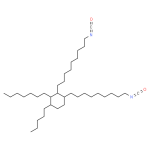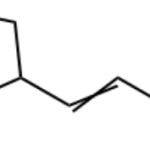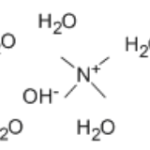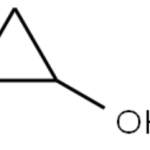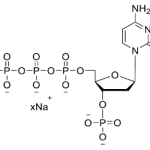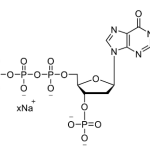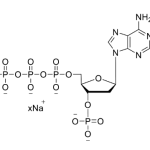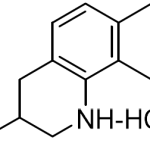
Official Full Name
Recombinant Human Fibroblast Growth Factor 9 (rHuFGF-9)
CAS Number (Or Watson Number for Non-CAS Products)
104-09-1816
Synonyms
GAF, Glia-activating factor,
HBGF-9 Squence

Amino Acid Sequence
APLGEVGNYF GVQDAVPFGN VPVLPVDSPV LLSDHLGQSE AGGLPRGPAV TDLDHLKGIL RRRQLYCRTG FHLEIFPNGT IQGTRKDHSR FGILEFISIA VGLVSIRGVD SGLYLGMNEK GELYGSEKLT QECVFREQFE ENWYNTYSSN LYKHVDTGRR YYVALNKDGT PREGTRTKRH QKFTHFLPRP VDPDKVPELY KDILSQS Synonyms
GAF, Glia-activating factor,
HBGF-9 Accession
P31371
Gene ID
2254
Summary
Fibroblast growth factor-9 (
FGF-9) is a member of the fibroblast growth factor (
FGF) family. All
FGF family members are heparin binding growth factors with a core 120 amino acid (a.a.)
FGF domain that allows for a common tertiary structure.
FGF-9 plays an important role in the regulation of embryonic development, cell proliferation, cell differentiation and cell migration. This protein was isolated as a secreted factor that exhibits a growth-stimulating effect on cultured glial cells.
FGF-9 is a monomer and interacts with
FGFR1,
FGFR2,
FGFR3 and
FGFR4. The human
FGF-9 shares 98 % a.a. sequence identity with mouse, rat, equine, porcine, and bovine
FGF-9.
Source
Escherichia coli.
Molecular Weight
Approximately 23.3 kDa, a single non-glycosylated polypeptide chain containing 207 amino acids.
Biological Activity
Fully biologically active when compared to standard. The
ED50 as determined by thymidine uptake assay using FGF-receptors transfected BaF3 cells is less than 0.5 ng/ml, corresponding to a specific activity of > 2.0 × 106
IU/mg.
Appearance
Sterile filtered white lyophilized (freeze-dried) powder.
Formulation
Lyophilized from a 0.2 um filtered concentrated solution in
PBS, pH 7.4.
Endotoxin
Less than 1
EU/ug of rHuFGF-9 as determined by
LAL method.
Reconstitution
We recommend that this vial be briefly centrifuged prior to opening to bring the contents to the bottom. Reconstitute in 1 ×
PBS to a concentration of 0.1-1.0 mg/mL. Stock solutions should be apportioned into working aliquots and stored at ≤ -20 °C. Further dilutions should be made in appropriate buffered solutions.
Stability and Storage
Use a manual defrost freezer and avoid repeated freeze-thaw cycles.- 12 months from date of receipt, -20 to -70 °C as supplied.- 1 month, 2 to 8 °C under sterile conditions after reconstitution.- 3 months, -20 to -70 °C under sterile conditions after reconstitution.
References
Purity
> 95 % by
SDS-PAGE and
HPLC analyses.
SDS-PAGE

Pack Size
5ug/100ug/500ug
Safety Data Sheet (SDS) Download
Click to download
Technical Data Sheet (TDS) Download
Click to download
Links
This product is branded by ChemWhat and sold through our website and here is the corresponding link
Recombinant Human Fibroblast Growth Factor 9 (rHuFGF-9) on ChemWhat
Quick Inquiry
Fill out our inquiry form and one of our experts will be in touch with you shortly.





